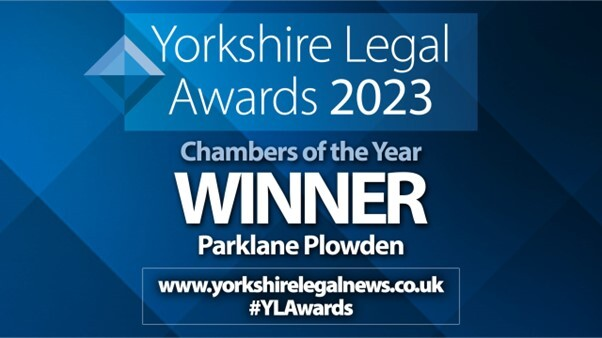<!-- wp:paragraph -->
<p><strong><em>Mr Joshua Parker v (1) Skyfire Insurance Company Limited (2) Spectra Drive Limited [2024] EWHC 1060 (KB)</em></strong></p>
<!-- /wp:paragraph --><!-- wp:paragraph -->
<p><strong>High Court, Mrs Justice Dias</strong></p>
<!-- /wp:paragraph --><!-- wp:paragraph -->
<p>This case concerns an appeal from an order of Mr Recorder Michael Smith sitting in the County Court at Liverpool on 25 September 2023 refusing an application by the Defendant ("Skyfire") for non-party disclosure under <strong>CPR Part 31.17</strong>.</p>
<!-- /wp:paragraph --><!-- wp:paragraph -->
<p><strong>Background</strong></p>
<!-- /wp:paragraph --><!-- wp:paragraph -->
<p>The underlying claim arise out of a road traffic accident which occurred on 5 December 2021 and involved what insurers have labelled <strong>"Google-spoofing"</strong>.</p>
<!-- /wp:paragraph --><!-- wp:paragraph -->
<p>Following the accident, the Claimant, Mr Parker, immediately attempted to notify his insurers, Hastings, of the accident. He Googled their name and rang the first number in the list of search results. Unbeknownst to him, he was in fact speaking to a claims management company which told him that he would be put in touch with a hire company who would arrange for his car to be repaired. His car was then collected from his home later that same day. On the following Monday, he was called by the First Respondent ("Spectra") who told him that they could provide him with a hire car and also sort out the damage to his own car.</p>
<!-- /wp:paragraph --><!-- wp:paragraph -->
<p>In due course he was sent a number of documents by Spectra. These included:</p>
<!-- /wp:paragraph --><!-- wp:list -->
<ul><!-- wp:list-item -->
<li>A short-term rental agreement for a maximum of 89 days on Spectra's letterhead and displaying its contact details and company registration. There was an express acknowledgement in the signature box that the hirer was agreeing to hire the vehicle on the terms and conditions contained in the agreement. Clause 5 of those conditions (which applied where the hire was necessitated by damage to the hirer's own car in a road traffic accident) contained an undertaking by the hirer to pay the hire charges either at the conclusion of any action against the third party alleged responsible for the accident or in any event within 11 months of the date of the agreement;</li>
<!-- /wp:list-item --><!-- wp:list-item -->
<li>A Form of Authority authorising Spectra to recover all uninsured losses arising from the accident and to appoint a solicitor on behalf of the hirer;</li>
<!-- /wp:list-item --><!-- wp:list-item -->
<li>A Mitigation Questionnaire in which the hirer acknowledged that the hire vehicle was not free, and that it was being provided on a credit hire basis;</li>
<!-- /wp:list-item --><!-- wp:list-item -->
<li>A sheet of FAQs identifying the hire company as Spectra Drive Limited and expressly clarifying that Spectra was not the hirer's insurance company or part of or acting on behalf of the hirer's insurers. It also stated that the hirer was legally liable for the charges incurred in hiring the vehicle but that Spectra would recover these from the third party. It continued, <em>"We will not ask you to pay the charges provided you have complied with the terms of the agreement and co-operated with us or any solicitor you instruct, throughout your claim."</em></li>
<!-- /wp:list-item --></ul>
<!-- /wp:list --><!-- wp:paragraph -->
<p>Mr Parker signed all these documents by Docusign.</p>
<!-- /wp:paragraph --><!-- wp:paragraph -->
<p>Mr Parker sought to recover his losses arising out of the accident, including the credit hire charges and other storage and recovery fees incurred under the agreements with Spectra.</p>
<!-- /wp:paragraph --><!-- wp:paragraph -->
<p>Skyfire objected to the claim for credit hire charges on a number of grounds, including enforceability of the credit hire contract. Skyfire strongly suspected that in the course of Spectra's discussions with Mr Parker, some misrepresentation was made, whether as to any association between Spectra and Mr Parker's own insurers, or as to the circumstances in which Mr Parker might or might not himself be called upon to pay the charges under the agreement. Its argument was that if any misrepresentation were made, the agreement would be voidable for misrepresentation and that if Mr Parker were to avoid it, he would not be under any subsisting liability to pay the credit hire charges and would not have suffered any corresponding loss. Skyfire would accordingly be relieved <em>pro tanto</em> of any obligation to indemnify him.</p>
<!-- /wp:paragraph --><!-- wp:paragraph -->
<p>However, Skyfire was unable to advance any positive case to this effect without the recordings of the conversations between Mr Parker and Spectra, and so made an application against Spectra for non-party disclosure of <em>"the recordings of all calls between Mr Joshua Parker and Spectra in relation to the accident, vehicle damage and replacement vehicle…". </em></p>
<!-- /wp:paragraph --><!-- wp:paragraph -->
<p>Skyfire’s Defence and Counter Schedule of Loss simply put Mr Parker to proof that he signed an enforceable agreement with Spectra and as to the representations made to him regarding the terms of payment.</p>
<!-- /wp:paragraph --><!-- wp:paragraph -->
<p><strong>Part 31.17</strong></p>
<!-- /wp:paragraph --><!-- wp:paragraph -->
<p>CPR Part 31.17 provides in material part as follows:</p>
<!-- /wp:paragraph --><!-- wp:paragraph -->
<p><em>"(1) This rule applies where an application is made to the court under any Act for disclosure by a person who is not a party to the proceedings.</em></p>
<!-- /wp:paragraph --><!-- wp:paragraph -->
<p><em>(2) The application must be supported by evidence.</em></p>
<!-- /wp:paragraph --><!-- wp:paragraph -->
<p><em>(3) The court may make an order under this rule only where—</em></p>
<!-- /wp:paragraph --><!-- wp:paragraph -->
<p><em>(a) the documents of which disclosure is sought are likely to support the case of the applicant or adversely affect the case of one of the other parties to the proceedings; and</em></p>
<!-- /wp:paragraph --><!-- wp:paragraph -->
<p><em>(b) disclosure is necessary in order to dispose fairly of the claim or to save costs.</em></p>
<!-- /wp:paragraph --><!-- wp:paragraph -->
<p><em>…"</em></p>
<!-- /wp:paragraph --><!-- wp:paragraph -->
<p>It was common ground that Part 31.17(3) sets out the threshold conditions which must be satisfied before any order can be made but that even if those conditions are met, <strong>the court has an overarching discretion whether to grant the order or not</strong>. In other words, satisfying Part 31.17(3) is a necessary but not sufficient condition of obtaining relief.</p>
<!-- /wp:paragraph --><!-- wp:paragraph -->
<p>It was also not seriously in dispute that <strong>an order for non-party disclosure is to be regarded as the exception rather than the rule</strong>: see <em>Rowe v Fryers</em> [2003] EWCA Civ 655 at [10].</p>
<!-- /wp:paragraph --><!-- wp:paragraph -->
<p><strong>The judgment under appeal</strong></p>
<!-- /wp:paragraph --><!-- wp:paragraph -->
<p>The application for non-party disclosure came before the Recorder on 25 September 2023 and was opposed by both Spectra and Mr Parker on the grounds that:</p>
<!-- /wp:paragraph --><!-- wp:list -->
<ul><!-- wp:list-item -->
<li>Disclosure was not necessary in the circumstances of the case;</li>
<!-- /wp:list-item --><!-- wp:list-item -->
<li>There had been delay in bringing the application;</li>
<!-- /wp:list-item --><!-- wp:list-item -->
<li>It would be disproportionate to require Spectra to search for all recordings over the entire lifetime of its relationship with Mr Parker;</li>
<!-- /wp:list-item --><!-- wp:list-item -->
<li>On a proper analysis of the law, no useful purpose would be served by ordering the disclosure because it would take Skyfire nowhere.</li>
<!-- /wp:list-item --></ul>
<!-- /wp:list --><!-- wp:paragraph -->
<p>In his judgment, the Recorder recognised that he was required to consider first whether the threshold conditions in Part 31.17 had been satisfied before proceeding to exercise his discretion based on a consideration of all the circumstances in the case.</p>
<!-- /wp:paragraph --><!-- wp:paragraph -->
<p>His conclusions were as follow:</p>
<!-- /wp:paragraph --><!-- wp:list -->
<ul><!-- wp:list-item -->
<li>He accepted that the question of enforceability and misrepresentation was a pleaded issue to which the disclosure was relevant.</li>
<!-- /wp:list-item --><!-- wp:list-item -->
<li>With some hesitation, he also accepted that the documents were necessary in order for Skyfire properly and fairly to advance the case it wished to make since, without the disclosure, its counsel would only be able to cross-examine Mr Parker on a purely speculative basis.</li>
<!-- /wp:list-item --><!-- wp:list-item -->
<li>It would not be unduly difficult to search for the recordings and it would not therefore be disproportionate to require disclosure to be made.</li>
<!-- /wp:list-item --><!-- wp:list-item -->
<li>Skyfire could justifiably be criticised for having delayed in bringing the application, with the result that granting the order would inevitably lead to vacation of the trial date. However, the credit hire charges were the key issue remaining in the case and the sum at stake was substantial. If disclosure was otherwise justified on the grounds of necessity, delay would not itself be a reason to refuse an order. There was no real prejudice to Mr Parker in vacating the trial since he had not been called upon to pay the charges himself and was not being kept out of any other damages to which he was entitled.</li>
<!-- /wp:list-item --><!-- wp:list-item -->
<li>However, even if the disclosure demonstrated unequivocally that there had been a misrepresentation, Skyfire's defence could still not succeed because the contract between Mr Parker and Spectra remained valid and enforceable until such time as Mr Parker chose to avoid it. There was no indication that he intended to do so and on the authority of <em>Irving v Morgan Sindall plc </em>[2018] EWHC 1147 (QB) he would be entitled to recover even if his liability under the contract was contingent upon his recovering damages from Skyfire.</li>
<!-- /wp:list-item --><!-- wp:list-item -->
<li>Accordingly no useful purpose would be served by making an order.</li>
<!-- /wp:list-item --></ul>
<!-- /wp:list --><!-- wp:paragraph -->
<p><strong>Grounds of appeal</strong></p>
<!-- /wp:paragraph --><!-- wp:paragraph -->
<p>In its Appeal Notice, Skyfire asserted that the Recorder's reasoning disclosed an error of law and/or that his conclusion was perverse. More specifically, it asserted that:</p>
<!-- /wp:paragraph --><!-- wp:list -->
<ul><!-- wp:list-item -->
<li>The Recorder wrongly interpreted <em>Irving v Morgan Sindall plc (supra)</em> as precluding Skyfire from raising an argument as to misrepresentation.</li>
<!-- /wp:list-item --><!-- wp:list-item -->
<li>It was inconsistent for the Recorder to suggest that, despite satisfying the threshold provisions of Part 31.17, disclosure would nonetheless serve no useful purpose.</li>
<!-- /wp:list-item --><!-- wp:list-item -->
<li>The conclusion that no useful purpose would be served was in any event perverse since it was based on an assumption that the contract with Spectra would be confirmed by Mr Parker when there was no direct evidence from him to this effect, only indirect hearsay evidence from his solicitors (in respect of whom there was a clear conflict of interest given that they also acted for Spectra). It was pure speculation what his evidence would be at trial.</li>
<!-- /wp:list-item --></ul>
<!-- /wp:list --><!-- wp:paragraph -->
<p>Permission to appeal was granted on the papers. </p>
<!-- /wp:paragraph --><!-- wp:paragraph -->
<p><strong>Discussion and analysis</strong></p>
<!-- /wp:paragraph --><!-- wp:paragraph -->
<p>It was not in dispute that an appeal from the County Court does not proceed by way of rehearing. It is limited to a review of the decision below and in accordance with CPR Part 52.21(3) requires the appellant to show that the decision appealed from was either wrong or unjust because of a serious procedural or other irregularity in the proceedings below. </p>
<!-- /wp:paragraph --><!-- wp:paragraph -->
<p>Mrs Justice Dias began by observing as follows (§21):</p>
<!-- /wp:paragraph --><!-- wp:list -->
<ul><!-- wp:list-item -->
<li><em>‘…the relevance of the disclosure is in relation to the question of whether Mr Parker has suffered any loss in respect of the credit hire charges. If the agreement with Spectra were invalid (for example, because it was irredeemably unenforceable due to some breach of the Consumer Credit Act), then Mr Parker would be under no liability to pay the charges and would have suffered no loss in that respect. In those circumstances, any claim would be limited to general damages to reflect the notional cost of hiring a car: see Bee v Jenson [2007] EWCA Civ 923.’</em></li>
<!-- /wp:list-item --></ul>
<!-- /wp:list --><!-- wp:paragraph -->
<p>Accordingly, Mrs Justice Dias did not accept the suggestion by the Claimant that any issue of remoteness arose or that the recent Supreme Court decision in <em>Armstead v Royal & Sun Alliance Co. Ltd</em> [2024] UKSC 6 had any relevance. It was observed that in that case, the argument raised by the defendant as to enforceability of the credit hire agreement had been withdrawn before the case reached the Court of Appeal and there was no dispute that the claimant was under a liability to pay the hire company.</p>
<!-- /wp:paragraph --><!-- wp:paragraph -->
<p><strong><em>Threshold requirements</em></strong></p>
<!-- /wp:paragraph --><!-- wp:paragraph -->
<p>Turning to the threshold requirements of Part 31.17(3), Mrs Justice Dias said as follows:</p>
<!-- /wp:paragraph --><!-- wp:list -->
<ul><!-- wp:list-item -->
<li>‘…there was no dispute before me that <strong>when assessing whether the disclosure sought is <em>"likely"</em> to support or adversely affect one side's case, the appropriate test to apply is whether it <em>"may well"</em> do so</strong>. This requires a higher degree of probability than that of <em>"real prospect"</em>…but something less than a balance of probabilities…’ (§23).</li>
<!-- /wp:list-item --><!-- wp:list-item -->
<li>‘It is clear from the material placed before me, including various court decisions involving Spectra itself, that <strong>it is not uncommon in credit hire cases for the claimant to be told – incorrectly – that he or she will have no personal liability for the hire charges</strong>. Other criticisms have also been made of credit hire companies, for example in failing to make clear that they were not the claimant's insurers or acting on behalf of the claimant's insurers. Equally there have been cases where it has been held that no misrepresentation was made’ (§24).</li>
<!-- /wp:list-item --><!-- wp:list-item -->
<li>‘However, it is important to note that these are all findings which were made after the judge had heard evidence at trial. This, by contrast, is a pre-trial application where it cannot be known for certain whether any misrepresentation was actually made or, if so, exactly what was misrepresented. [Counsel for the Appellant] submits that this is precisely why pre-action disclosure is needed because the point is crying out for investigation at trial’ (§25).</li>
<!-- /wp:list-item --><!-- wp:list-item -->
<li>I have considerable sympathy with this submission. <strong>Non-party disclosure applications frequently involve a degree of speculation as to what will emerge</strong>. The question for me is whether Skyfire has done enough to show that the call recordings "may well" support its case or adversely affect that of Mr Parker’ (§26).</li>
<!-- /wp:list-item --><!-- wp:list-item -->
<li>‘<strong>At the very least, it seems to me that this is a point which would in principle be worthy of exploration at trial</strong>. <strong>I am</strong> <strong>therefore satisfied that the disclosure sought "may well" support Skyfire's case on misrepresentation and is accordingly likely to do so</strong>. It is not a mere fishing expedition. <strong>I stress, however, that this is a decision which rests on the particular facts of this case</strong>. It may well be that in cases involving other claims management and credit hire companies, there is not sufficient evidence to satisfy the threshold condition of likelihood with regard to the existence of a misrepresentation. This must always be a fact-specific assessment which may vary from case to case and it is not possible to lay down any general rules’ (§29).</li>
<!-- /wp:list-item --><!-- wp:list-item -->
<li>‘However, that is not the end of the matter because Skyfire must also satisfy me that the disclosure is <strong>necessary in order to dispose fairly of the claim or to save costs</strong>. But <strong>if there is no real prospect that the disclosure can make any difference to the outcome of the claim, it is difficult to see how it could ever be "necessary" to the fair disposal of the claim</strong>’ (§30).</li>
<!-- /wp:list-item --><!-- wp:list-item -->
<li>‘There was rightly no suggestion in this case that the contract was unenforceable or invalid because Mr Parker did not understand what he was signing. <strong>It is well-established that it unnecessary for a contracting party to have understood the true nature of the contract in order to be bound by it</strong>: <em>Burdis v Livsey </em>[2002] EWCA Civ 510’ (§31).</li>
<!-- /wp:list-item --><!-- wp:list-item -->
<li>The only basis on which it was suggested that Mr Parker might not actually be liable to Spectra was on the grounds of misrepresentation. However, it was conceded that <strong>even if it could be established that Mr Parker's contract with Spectra was tainted by misrepresentation, that would not of itself mean that he was under no liability</strong>, conceding, amongst other things, that <strong>a voidable contract is valid unless and until it is avoided</strong>; <strong>avoidance requires the innocent party to take some steps to rescind the contract</strong>; <strong>recission is not available unless it is possible to make <em>restitutio in integrum</em></strong>; and <strong>a contract cannot be rescinded if it has been affirmed by the innocent party</strong> with full knowledge of the facts and of his or her right to avoid (§32). </li>
<!-- /wp:list-item --><!-- wp:list-item -->
<li>Mrs Justice Dias disagreed that the Recorder wrongly interpreted <em>Irving v Morgan Sindall plc</em>. In her view, the Recorder correctly identified the proposition that a claimant's liability under a credit hire contract is, whether as a matter of construction or by operation of a collateral agreement or otherwise, contingent upon them recovering damages from the defendant, which contingent liability constitutes a loss in respect of which a claimant can recover (§35). </li>
<!-- /wp:list-item --><!-- wp:list-item -->
<li>The Recorder’s conclusion that ordering disclosure would be futile was the result of his assessment, based on the facts and evidence before him, that there was no sufficiently realistic prospect of avoidance <em>even if</em> a misrepresentation could be established (§36).</li>
<!-- /wp:list-item --><!-- wp:list-item -->
<li>The question whether the Recorder's conclusion was nonetheless wrong because it was perverse required consideration of two separate questions: (1) <strong>whether avoidance was even an option</strong> <strong>open to the Claimant</strong> <strong>unless he could make restitution</strong>; and (2) <strong>if it was,</strong> <strong>whether he had in any event put it out of his power to avoid by affirming the contract</strong> (§38).</li>
<!-- /wp:list-item --><!-- wp:list-item -->
<li>As to <strong>affirmation</strong>: ‘A voidable contract does not depend for its validity on whether it has been affirmed or not. Rather it is valid unless and until it is avoided. <strong>The correct question is</strong> therefore not whether the Respondents have produced sufficient evidence of affirmation, but <strong>whether Skyfire can point to a real prospect that the contract is both capable of being avoided in principle, and, if so, might in fact be avoided by Mr Parker</strong>’ (§40). </li>
<!-- /wp:list-item --><!-- wp:list-item -->
<li>The Appellant laid much emphasis on the fact that there was no positive or direct evidence of affirmation from Mr Parker. However, Mrs Justice Dias observed that a contract can be affirmed by conduct as much as by express words and statements and may even be deemed to have been affirmed by lapse of time: <em>Chitty (op.cit.) </em>para. 10-148 (§41).</li>
<!-- /wp:list-item --><!-- wp:list-item -->
<li>Mr Parker brought his claim to recover the credit hire charges in express reliance upon the contract with Spectra, opposed the application for non-party disclosure before the Recorder and continued to maintain his opposition to the application on the basis argued by his counsel that avoidance was not a realistic possibility. </li>
<!-- /wp:list-item --><!-- wp:list-item -->
<li>Against that background, Mrs Justice Dias could not see any basis for suggesting that Mr Parker might seek to avoid the contract with Spectra in the future, having chosen not to do so hitherto (§43).</li>
<!-- /wp:list-item --><!-- wp:list-item -->
<li>However, <strong>even assuming a real prospect that the contract is capable of being avoided in principle, it is necessary to ask the question as to whether it is a course of action even theoretically open to a claimant if restitution can no longer be made</strong>.</li>
<!-- /wp:list-item --><!-- wp:list-item -->
<li>In Mr Parker’s case, the hire agreement was a contract for services which had been fully performed. Mrs Justice Dias observed that Mr Parker had the benefit and use of the car for nearly one year and that in those circumstances, it was difficult to see how he could make restitution in respect of those services received: ‘In this respect, a contract for services is very different from, for example, a contract for the sale of goods where the goods themselves can be returned, even if it might be necessary to make some allowance for depreciation. Although there are indications that the courts might be prepared to adopt a slightly more flexible approach to restitution than in the past, it is still the case that a fully performed contract for services cannot be rescinded: <em>Chitty (op.cit)</em> paragraphs 10-139 to 10-140 (§45).</li>
<!-- /wp:list-item --><!-- wp:list-item -->
<li>‘This, it seems to me, is an insuperable obstacle to avoidance of the contract which exists independently of any misrepresentation or affirmation. It follows that even if the application were granted and even if the disclosure fully supported a case of misrepresentation, Skyfire would be unable to establish any circumstances in which Mr Parker would be relieved of his liability under the contract with Spectra’ (§46). </li>
<!-- /wp:list-item --><!-- wp:list-item -->
<li>In Mrs Justice Dias’ judgment, for these reasons, the Recorder was entirely correct to conclude that disclosure would serve no useful purpose and as such that it could not be regarded as necessary for the fair disposal of the claim (§47). </li>
<!-- /wp:list-item --><!-- wp:list-item -->
<li>Mrs Justice Dias was at pains to stress that there must always be a fact-specific assessment and that ‘<strong>it is not possible to lay down any general rules</strong>’ (§29): ‘Again, I stress that this is a fact-specific finding which depends on the circumstances of the particular case. Other cases may present factual situations where rescission is not barred on the facts and where there are no compelling grounds for saying that the contract had been affirmed but that is not the case here’ (§48).</li>
<!-- /wp:list-item --></ul>
<!-- /wp:list --><!-- wp:paragraph -->
<p><strong><em>Proportionality</em></strong></p>
<!-- /wp:paragraph --><!-- wp:paragraph -->
<p>As regards proportionality, Mrs Justice Dias agreed with the Recorder that ‘it would not be disproportionate or unreasonable for Skyfire to be ordered to give disclosure if it was otherwise appropriate’, observing that she would not have refused the application on this ground alone (§50). </p>
<!-- /wp:paragraph --><!-- wp:paragraph -->
<p><strong><em>Delay</em></strong></p>
<!-- /wp:paragraph --><!-- wp:paragraph -->
<p>‘The question of whether the application should be refused on grounds of delay is a paradigm example of a case management decision falling within the ambit of the Recorder's discretion’ (§57). </p>
<!-- /wp:paragraph --><!-- wp:paragraph -->
<p><strong><em>Postscript</em></strong></p>
<!-- /wp:paragraph --><!-- wp:paragraph -->
<p>As regards the practice of “Google-spoofing”, Mrs Justice Dias said, <em>obiter</em>, that whilst she could readily understand the desire of insurance companies to challenge such practices, ‘if there is anything objectionable in it, it may well be that this can only be addressed by Parliament, the FCA or one of the other industry regulators’ (§61).</p>
<!-- /wp:paragraph --><!-- wp:paragraph -->
<p>The full judgment can be found <a href="https://www.bailii.org/ew/cases/EWHC/KB/2024/1060.html" target="_blank" rel="noreferrer noopener">here.</a></p>
<!-- /wp:paragraph -->







